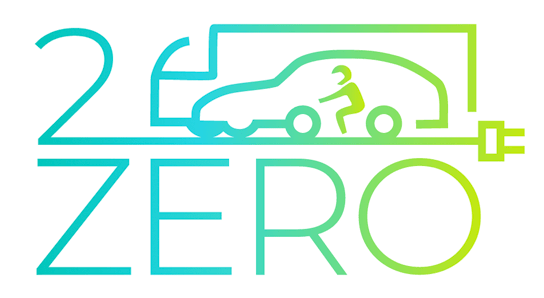SUREAL-23
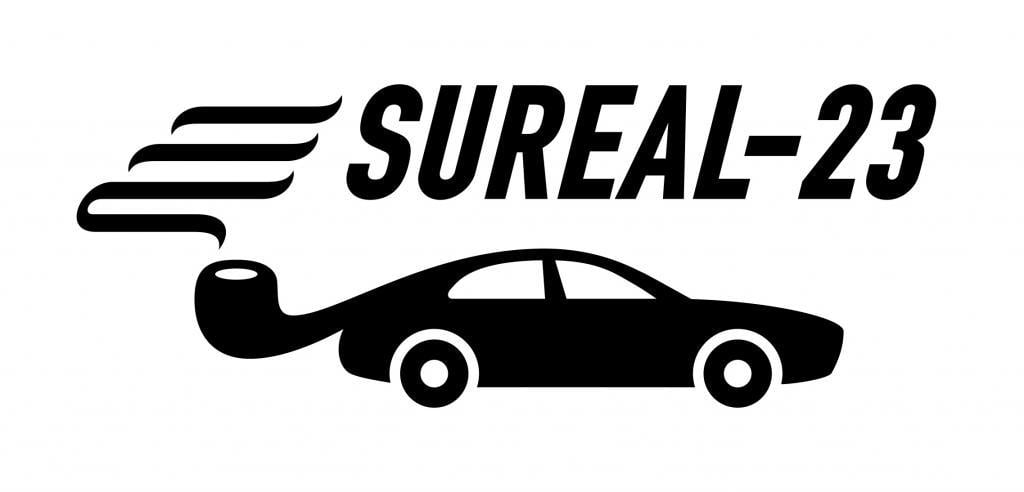
- Website: http://sureal-23.cperi.certh.gr
SUREAL-23: Understanding, Measuring and Regulating Sub-23 nm Particle Emissions from Direct Injection Engines Including Real Driving Conditions
SUREAL-23 is a Horizon 2020 project (G.A. 724136), funded under the call for Technologies for low emission light duty powertrains (GV-02-2016) and aims to:
- Develop new instrumentation to complement standard Particle Measurement Program (PMP) protocol and extend the available analytical toolset, by providing transient Particle Number (PN) measurement and size classification specifically for the sub-23 nm size region, while pursuing the reduction/elimination of requirements for exhaust sample conditioning by applying high-temperature operation instruments.
- Provide a simple and robust exhaust aerosol sample treatment with increased volatile material removal efficiency and minimum particle losses.
- Investigate the effect of different gasoline, diesel and gas engine operating conditions (fuel additives, bio-content, gas fuel addition, after-treatment type and operation, etc.) on sub-23 nm particle emissions.
- Integrate the most suitable components of the extended sub-23 nm measurement toolset proposed developments into Portable Emission Measurement System (PEMS) and verify their measurement capability in real driving conditions.
Project’s technical approach
SUREAL-23 is structured in work packages addressing the different development steps:
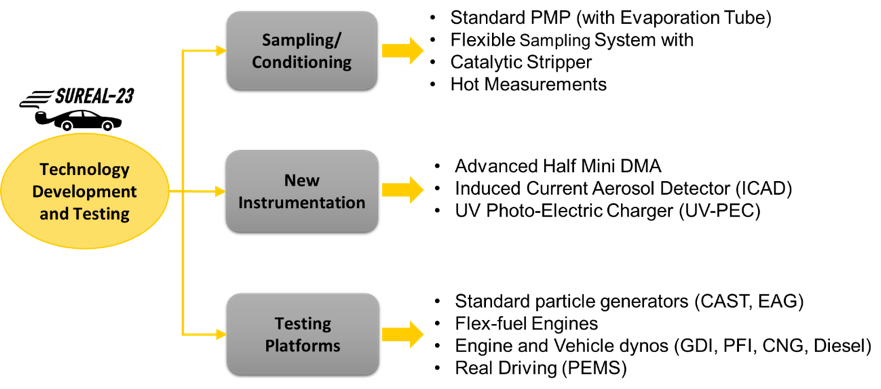
Figure 1. SUREAL-23 approach
Main achievements
Sampling and conditioning
The project developed a Sampling and Conditioning Particle System (SCPS) that may be used for stationary exhaust measurements either downstream the CVS or for direct tailpipe measurements (Chasapidis et al., 2019). The dilution process is achieved in two stages, and the dilution ratio range is 30 to 120. Water, volatile and semi-volatile compounds are efficiently removed without creating artefact particles, using an in-house developed catalytic stripper (Melas et al., 2019). The system’s high particle penetration in conjunction with high volatile particle removal efficiency offers the possibility for robust solid particle measurements down to at least 10 nm with a PCRF (Particle Concentration Reduction Factor) of 1.19±8%.
Instrumentation for particle measurement and characterization
- Heated ICAD (Induced Current Aerosol Detector) is a particle number (PN) concentration measuring instrument based on the diffusion charging principle. The developed instrument is based on a commercially available device, the automotive Partector from Naneos Particle Solutions GmbH (Fierz et al., 2014). The new system has a cut-off size of 10 nm and is able to measure a hot (>150 °C) exhaust gas sample. It is ideal for RDE measurements and can measure directly from the tailpipe of the vehicle without any dilution stage.
- Advanced Half Mini DMA is a supercritical DMA of very high resolution, initially developed by de la Mora & Kozlowski (2013) and commercially available by SEADM SL. The instrument was modified in order to achieve high-resolution mobility size measurements up to 30 nm (Fernandez de la Mora, 2017), high-temperature operation (T=200oC) for hot aerosol measurements (Amo et al., 2017 & 2018) and voltage sweep of <2 s for real-time scanning (Baltzopoulou et al., 2019).
- UV-PEC (UV Photoelectric Charger) is a new aerosol detection instrument that facilitates the on-line detection of Poly-Aromatic Hydrocarbons (PAHs) content of ultrafine particles. PAHs are considered as a major contributor to the impact of the engine exhaust with respect to health. The principle of operation is based on the photoelectric effect. UV-PEC consists of a precipitator that removes the naturally charged particles, a UV light source (deuterium lamp), an ionization chamber, and an ion trap that removes the photo emitted electrons. The UV light beam has a tunable wavelength (206, 214, 228, 239 and 250 nm). The system includes an electrometer and a CPC to measure the charged and the total particles number concentration respectively, in order to determine the charging efficiency of the PAH carried on the particles (Melas et al., 2019).
Characterization of sub-23 nm particle emissions
The nature of sub-23 nm particles was extensively studied using different testing platforms. Lubrication oil consumption was found to influence the sub-23 nm fraction both for diesel and gasoline engines. Similarly, fuel additives were found to produce solid nucleation particles. The bio content for diesel (RME) and gasoline (ethanol) also increased the sub-23 nm particles. The cold start was found to result in increased PN emissions as well as nucleation particle emissions.
Specifically for the diesel engines, it was verified that sub-23 nm particles are not an issue, except for extreme conditions (massive dosages of fuel additives and excessive lube-oil fuel consumption). In the case of Diesel Particle Filter (DPF) regeneration, some solid sub-23 particles have been measured, immediately after the regeneration phase but only for a limited time and they should not be accounted as a significant problem. We have also found that increasing the RME increases sub-23 nm particle emissions.
Concerning the gasoline engines, the direct injection results in significantly higher total and sub-23nm particle emissions than the port fuel injection. Also, the increase of the ethanol content may lead to a decrease in the total particle number and also the volatile content of the particles, but the sub-23 nm fraction may increase. Increasing engine speed leads to a general increase in particle emissions including sub-23 nm particles, but the fraction of sub-23 to total particles may decrease. Increasing load leads to a decrease, in general, of particle emissions however, particles become more volatile. Cold start and warm-up phase may lead to 5x or more particle emissions than the hot engine operation. A Gasoline Particle Filter (GPF) can be very effective attaining filtration efficiency values of more than 80 % including sub-23 nm particles. On the other hand, the TWC has the minimal effect of particle emissions.
Laboratory and on-road measurements
During the project, numerous campaigns were performed:
- i) Engine test bench: steady-state and transient driving cycles for three Diesel engines (with and without DPF) and two GDI engines (with TWC, without GPF)
- ii) Vehicle test bench: one Diesel (with DPF), two Euro-6c, GDIs (one with the original GPF and the other with a retrofitted GPF), one hybrid GDI (with GPF), on Euro-6b vehicle (without GPF) operating a mixed-mode (PFI/GDI) injection system and one with a compressed natural gas (CNG) engine. The CNG vehicle had no particle filter.
- iii) On-road RDE tests: the two GDIs, the hybrid GDI and the CNG vehicle.
The selection of the vehicles was based on availability and on having a variety of brands and powertrain technologies representative of the current EU fleet.
Figure 2 presents some of the project results from the chassis dynos. Three engine technologies are shown (GDI, CNG and Diesel) as well as the effect of cold and hot-start on the WLTC emissions. All vehicles emit more on the cold-start compared to the hot start, however even in cold-start, the emissions never exceed the limit of 6×1011 particles/km with the CNG vehicle emitting the lowest total number of particles. In the same picture, the fraction of sub-23 particles is shown for each vehicle. The sub-23 fraction is the highest for the CNG vehicle and gets more than 40% when the cycle is cold-started.
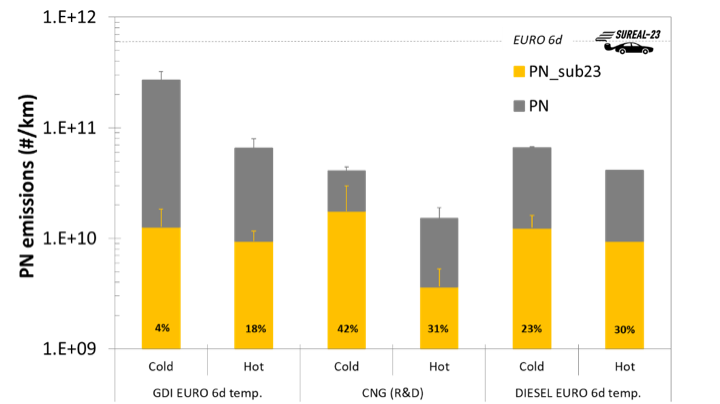
Figure 2: PN emissions from three vehicles during cold and hot-start WLTC cycles (PN_sub23 refers to 10-23nm fraction).
Figure 3 presents on-road, RDE results from five vehicle technologies. Each vehicle was equipped with a commercially available PEMS system (HORIBA OBS-one) and the ICAD which was developed within SUREAL-23. The commercial system includes two dilution stages and a volatile particle remover and is able to account only for particles >23 nm. The ICAD is sampling from the raw exhaust using only a heated line. The latter can account for particles >10 nm. In general, there is good agreement between the two systems despite the differences in the sampling systems and the particle counters. All vehicles are within the imposed particle limits. The GDI/PFI vehicle, without a GPF, demonstrates, as expected the highest emissions, however still less than the EURO 6b limit. The CNG emissions are comparable to GDI emissions with GPF. The hybrid GDI vehicle (with GPF) demonstrates higher particle emissions than the conventional GDIs.
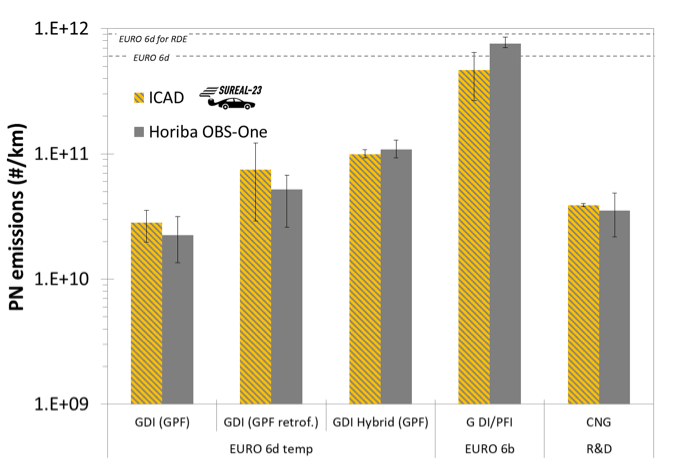
Figure 3: RDE emissions of five vehicles as measured via the SUREAL-23 version of heated ICAD and a commercial PN-PEMS.
Summary
SUREAL-23 has been successful in providing new instrumentation able to measure sub-23 nm particles and advanced particle sampling and treatment technologies. The technologies developed were applied in numerous engine and chassis dynos tests revealing significant insights on the ultra-fine particle emissions of different ICE-based vehicles.
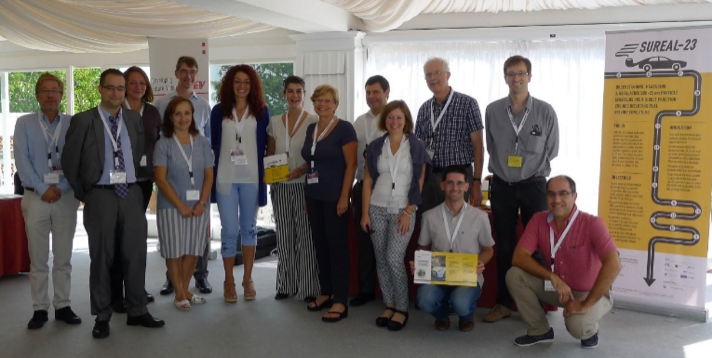
Figure 4: Members of the SUREAL-23 consortium at the 13th International Conference on Engines & Vehicles
| Coordinator: | Centre for Research & Technology – Hellas (CERTH) |
| Partners: | Centro Ricerche FIAT (CRF) |
| IFPEN Energies Nouvelles | |
| Istituto Motori (IM) | |
| Institute for Aerosol and Sensor Technology (FHNW) | |
| SEADM SL | |
| NKT Photonics | |
| Associated Partners: | TSI |
| Yale University | |
| Follow on Twitter: | #SUREAL23 |
| This project has received funding from the European Union’s Horizon 2020 research and innovation programme under grant agreement No 724136. |
